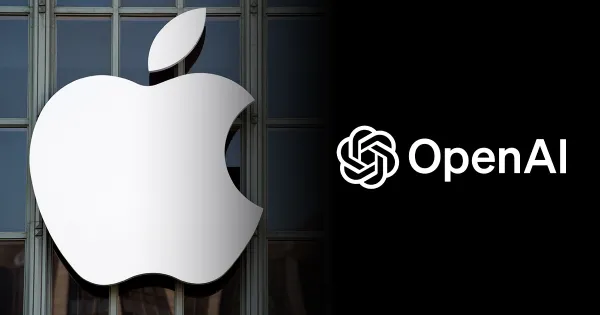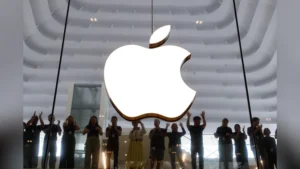Apple Opens Its AI Toolbox: Granting Developers Access to the Backbone of Apple Intelligence
1. The Shift from Consumer Tools to Developer Platforms
At WWDC 2025, Apple made a quietly pivotal move: its Apple Intelligence—powered by both on-device and private-cloud models—will now be accessible to third-party developers. This marks a key strategic shift from treating AI as consumer enhancements to positioning it as a foundational layer for app innovation. ReutersWIREDAppleWikipedia
-
What’s opening up? Apple is providing access to its on-device foundation models—the smaller, privacy-first AI models that power key features like notification summary, writing tools, live translation, and Visual Intelligence. Reuters9to5MacETCIO.comAppleWikipedia
-
How? Developers can now leverage a new Foundation Models framework, directly integrating Apple Intelligence into their apps using Swift with as little as three lines of code. Apple
This contrasts with previous years when developers could only integrate select front-end tools like Genmoji or Image Playground—not the underlying models themselves. 9to5MacNDTV ProfitETCIO.com
2. Apple’s Direction: Privacy, Pragmatism, and Incremental Progress
Apple’s headlines at WWDC offered practical features—live call translation, Visual Intelligence, redesigned UIs (codenamed “Liquid Glass”), and system-wide AI integration across iOS, macOS, iPadOS, and more. ReutersThe VergeWIRED
But industry observers called these updates “incremental” compared to the sweeping AI ambitions of Alphabet, Microsoft, and others. Reuters
With this developer-focused opening, Apple doubles down on a privacy-centric approach: AI runs offline on-device, with no data shared externally—addressing privacy concerns while delivering low-latency experiences. WIREDAppleWikipedia
3. The Foundation Models Framework: What Developers Can Expect
The Foundation Models framework empowers developers to:
-
Integrate Apple’s on-device foundation models seamlessly using Swift. Apple
-
Utilize features like guided generation and tool-calling built directly into the framework.
-
Create privacy-preserving, offline AI experiences—such as journaling assistance (e.g., in Day One by Automattic) and intelligent app integration (e.g., visual search in Etsy). Apple
In Xcode 26, AI is built into the code editor:
-
Developers can connect models (on-device or via ChatGPT) to generate code, fix bugs, add documentation, or iterate designs inline.
-
Tools like “Coding Tools” suggest actions directly in the code pane for faster development. Apple
Meanwhile, App Intents—Apple’s integration layer with Siri, widgets, Spotlight—now supports Visual Intelligence, allowing apps to link directly from visual search results. Apple
4. Why Apple Is Opening Its AI: Goals and Strategic Calculus
A. Stimulating the App Ecosystem with AI
By enabling developers to integrate AI natively, Apple hopes to ignite a wave of innovative, privacy-first AI apps—much like the original App Store unlocked mobile app growth. NDTV ProfitAInvest
B. A Response to Slow AI Progress
Apple’s earlier AI rollout has been criticized for being sluggish—delays with Siri, mixed results with Genmoji, and dependence on external tools like ChatGPT. New York PostNDTV ProfitReddit
Opening its own AI models to developers may accelerate adoption and amplify value, even if publicly Apple appears cautious. AInvestNew York Post
C. Balancing Innovation with User Trust
Unlike rivals who push server-based, powerful but privacy-obscuring models, Apple draws a clear line: AI runs locally, without data needing to leave the device. That’s a cornerstone of Apple’s brand. ReutersWIREDWikipedia
5. The Expanded Toolbox: Contextualizing Apple’s AI Landscape
On-Device vs. Cloud Models
Apple’s on-device foundation models are trimmed (~3-billion parameters) for privacy and efficiency—not matching the raw power of cloud models—but enough for context-sensitive tasks. ReutersWikipedia
Apple still maintains more powerful cloud-based models hosted securely on Apple’s servers (via Private Cloud Compute), though these remain inaccessible to third parties. Wikipedia
AI Features Shipping in iOS 26
iOS 26 (and sibling OSes in the “year naming” scheme) include:
-
Live translation in calls and messages
-
Visual Intelligence over screenshots and images
-
AI-powered Shortcuts and Genmoji updates
-
Coding Tools and deeper AI integration via Xcode 26
-
App Intents tied into system-wide experiences TechRadarThe VergeWIREDAppleWikipedia
6. What This Means for Developers, Users, and Apple
For Developers
-
Reduced friction: Swift-first integration lowers the barrier to add AI capabilities.
-
Privacy-first AI: Apps can deliver intelligent experiences without pushing data to the cloud.
-
Innovation runway: Tools like Visual Intelligence and Coding Tools expand what apps can do on-device.
For Users
-
Smarter apps: Expect more native apps with AI-powered features—writing assistants, visual search, language tools, etc.
-
Trust and privacy: AI runs without sending personal data off-device, aligning with Apple’s privacy ethos.
For Apple
-
App Store relevance: Fresh AI-powered apps can drive engagement and ecosystem stickiness.
-
Regulatory buffer: Privacy-forward architecture helps Apple withstand antitrust scrutiny.
-
Competitive repositioning: This move helps Apple stay relevant in AI—even if it’s not leading in raw AI power.
7. Challenges & Caveats Ahead
Limited Model Power
On-device models, while efficient and private, lack the reasoning depth of cloud-based LLMs from competitors like OpenAI or Google. WIREDReuters
Developer Interest & Adoption
If developers hit limitations (e.g., prompt length, model complexity), they may prefer integrating off-device models via APIs instead. Balancing power and privacy will be critical. AInvestReuters
Performance Constraints
Even with Apple silicon, running inference locally demands battery and thermal efficiency. Heavy AI tasks may slow down or drain devices. RedditAInvest
Brand Risk from Failures
Inaccurate outputs—like mistranslated calls or misgenerated Genmoji—can harm trust. Apple must ensure high model quality and graceful fallback behaviors. NDTV ProfitNew York Post
8. What’s Next: The Road Ahead for Apple AI
-
Model evolution: We may see larger on-device models over time as hardware advances (e.g., M4 chip).
-
Cloud-model dialogue: Apple might eventually offer tiered access—developer APIs to cloud models under strict privacy guardrails.
-
Cross-device workflows: AI prompts and tasks could move from iPhone to Mac to Vision Pro—continuity powered by AI.
-
Advanced AI in tools: Expect richer capabilities in Xcode (e.g., Swift Assist, debugging AI), App Intents, and cross-app automation.
-
AI services economy: If AI apps proliferate, App Store could revive growth amid regulatory pressure on commissions. NDTV Profit
Summary Snapshot
| Aspect | Insight |
|---|---|
| What’s new | Developers can now access Apple’s on-device foundation models via a Swift-first Foundation Models framework. |
| Key tools | Xcode 26 (AI for coding), App Intents with Visual Intelligence, system-wide AI features in iOS 26. |
| Why it matters | Encourages AI innovation while preserving privacy, reinvigorates App Store, and repositions Apple in AI without losing brand trust. |
| Risks | Model limitations, performance overhead, possible developer disinterest, brand impact from AI missteps. |
| Future | Smarter apps, enhanced cross-device experiences, potential cloud model APIs, a refreshed app economy, and deeper AI integration across Apple devices. |
https://bitsofall.com/https-yourwebsite-com-meta-hired-openai-researchers/






